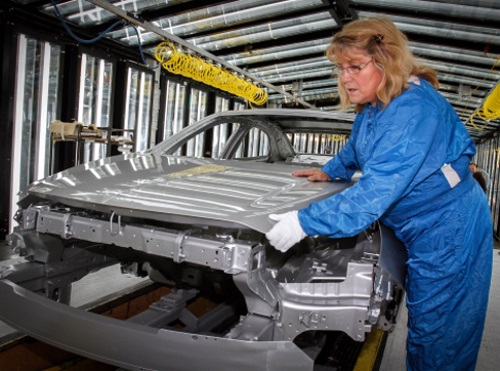The National Highway Traffic Safety Administration has issued new Corporate Average Fuel Economy or CAFE standards that require an industry-wide fleet average of approximately 49 miles per gallon for passenger cars and light trucks in model year 2026.
[Above photo of GM plant via Wikimedia Commons]
The agency said in a statement that the new standards would increase fuel efficiency 8 percent annually for model years 2024-2025 and 10 percent annually for model year 2026. They will also increase the estimated fleet-wide average by nearly 10 miles per gallon for model year 2026, relative to model year 2021.
NHTSA added that its new CAFE standards for model year 2024-26 should reduce fuel consumption by more than 200 billion gallons through 2050, as compared to the old standards.
The agency also noted that this final CAFÉ rule follows President Biden’s Executive Order 13990, which directed NHTSA to review the 2020 “The Safer Affordable Fuel-Efficient (SAFE) Vehicles Rule for Model Years 2021-2026 Passenger Cars and Light Trucks” final rule.
NHTSA also emphasized, however, that “real-world fuel economy” is generally 20 to 30 percent lower than the estimated required CAFE level stated above, while also noting that actual CAFE standards serve as a “footprint” or “target” curves for passenger cars and light trucks. That means ultimate fleet-wide levels would vary depending on the mix of vehicles that the industry produces for sale in those model years.
This agency added that its final rule reflects a conclusion “significantly different” from the conclusion it reached in the 2020 final rule. However, this is because “important facts have changed” and because NHTSA has reconsidered how to balance the relevant statutory considerations in light of those facts.
NHTSA concludes that these significantly more stringent standards are feasible and vehicle manufacturers can achieve them during the period covered by this new final rule. Standards that are more stringent than those finalized in 2020 appear economically practicable, based on manageable average per-vehicle cost increases, large consumer fuel savings, minimal effects on sales, and estimated increases in employment, among other things.
